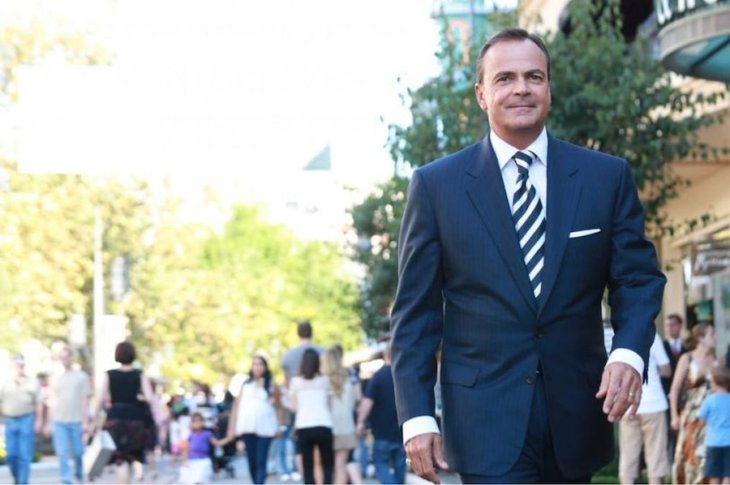At YoVenice we have spent years writing about news stories of motorcyclists with head and brain injuries from collisions. We believe in riders doing everything they can to protect themselves from dangers on the road in Los Angeles.
One of the simplest things a motorcyclist can do is wear a helmet. As of September 2021, the IIHS-HLDI released an updated Motorcycle Helmet Laws spreadsheet, highlighting which states require riders to wear a motorcycle helmet.
Today, only 18 states and the District of Columbia have universal helmet laws, and 29 states have laws covering some riders, usually people younger than 18. Three states do not have any helmet requirements at all – though we’d advise our readers to think twice before getting onto a bike without one.
In Los Angeles and California, motorcycle helmets are a universal requirement. Here are the rules across the rest of the U.S.
Risks of Riding Without a Helmet
The study “Motorcycle Fatality Rates Due to Head Injuries are Lower in States with Helmet Laws” concludes that there are more than 4,500 motorcycle crash fatalities every year in the United States, and around 37% of those deaths involve head injuries.
In 2017, the NHTSA estimated that helmets saved the lives of 1,872 motorcyclists. If all motorcyclists had worn helmets, an additional 749 lives could have been saved. In fact, helmets are estimated to be 37 percent effective in preventing fatal injuries to all motorcycle riders.
Additional data also suggests that motorcycle helmets reduce the risk of head injury in a crash by 69% and actually reduce the risk of death by 43%.
The Benefits of Wearing a Motorcycle Helmet While Riding
Here are some of the benefits of wearing a motorcycle helmet:
- Protection from head injury – there are several items motorcyclists can use to protect themselves, such as helmets, gloves, and long-sleeved jackets.
- Wind noise – the helmet improves the comfort of the motorcyclist rider by reducing the sound of the wind.
- Weather – a motorcycle helmet offers protection from all types of weather. For example, many helmets have visors that help with the glare of the sun.
- Insurance and medical bills – motorcycle riders who choose not to wear helmets have higher health care costs and motorcycle insurance costs.
Along with reducing the risks of severe head injuries, The Motorcycle Safety Lawyers add that “Helmets also help to protect riders from annoyances such as road debris, bugs, and, as mentioned, weather conditions.”
Americans are More Likely to Wear a Helmet When Riding With Someone
Having a passenger on board is also a significant factor when it comes to riders choosing to wear a helmet. 79.7% of riders will wear a helmet when they have a passenger, compared to 74% when riding solo.
Over 40% of motorcyclists who died in 2016 were not wearing a helmet, and it is estimated that 802 American lives could have been saved if these riders were wearing their helmets.
Given these statistics, why do motorcyclists choose to ride without a helmet?
Motorcycle Helmet Laws – By State
State laws have a major effect on whether rides choose to use a helmet or not. Motorcycle helmet laws are usually written to apply to all riders or riders of a specific age.
There are only three states that do not have motorcycle helmet laws:
- Illinois
- Iowa
- New Hampshire
In 2020, 94% of motorcyclists observed in states with universal helmet laws were wearing helmets. In states without such laws, helmet use was only 60%.
In states such as Illinois, with no universal helmet law, 57% of motorcyclists killed in traffic collisions in the recent year were not wearing a helmet, compared to 8% in states that have enforced universal helmet laws.
Nineteen states require that all riders wear a helmet. Eighteen states require that riders age 17 and younger wear helmets, and nine states require riders age 20 and younger to wear helmets. Delaware requires riders age 18 and younger to wear helmets, and Missouri sets the age as 25.
States Like Los Angeles That Require Helmets By Law Save Lives
Statistics show that when helmets are required by state law, more people will wear them therefore more lives are saved. In 2013, in states without universal helmet laws, 59% of the motorcyclists killed were not wearing helmets – as opposed to only 8% of those in states with universal helmet laws.
In Michigan, which repealed its all-rider law in 2012, there would have been 26 fewer motorcycle crash deaths if the helmet mandate was still in place, according to the University Michigan Transportation Research Institute.
Additionally, motorcycle helmets are currently preventing $17 billion in societal harm annually, but another $8 billion in harm could be prevented if all motorcyclists wore helmets.
Motorcycle crash deaths are costly but preventable. The single most effective way for states to save lives and to save money is through a universal helmet law.
By an overwhelming majority (more than 82%), Americans favor state laws requiring all motorcyclists to wear helmets.
A Motorcycle Helmet Could Save Your Life.
According to the National Occupant Protection Use Survey, (NOPUS), the use of Department of Transportation (DOT) compliant helmets by all motorcyclists was 70.8% in 2019. Therefore, helmet use has increased by 23% since 2002, from 57.7%.
However, this doesn’t prevent all motorcycle accidents from happening. Motorcyclists are not protected during a collision like drivers and passengers in cars and trucks. A motorbike crash, particularly with another motor vehicle, is certain to leave a rider hurt.
Motorcycle helmets are known to save lives. Please consider the risks before getting onto your bike.


























